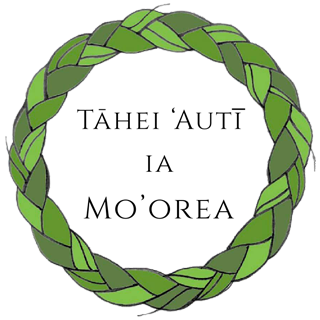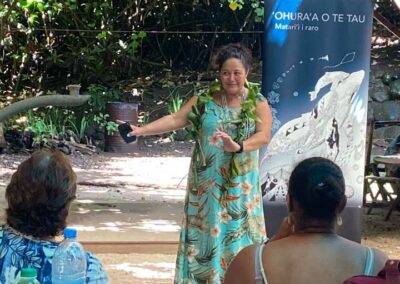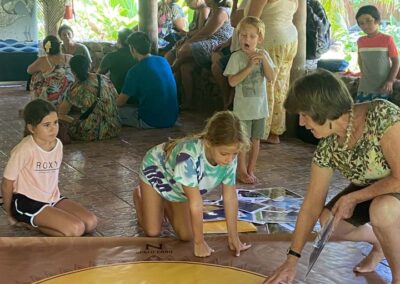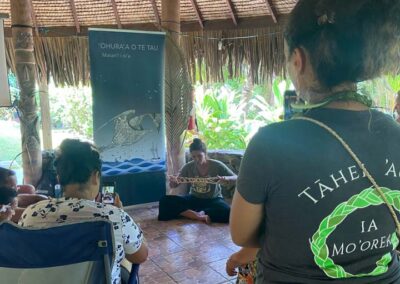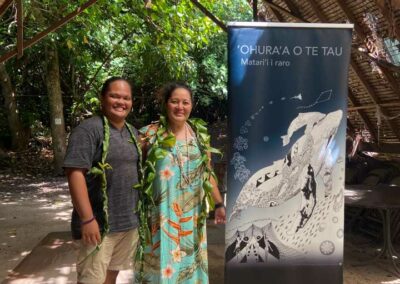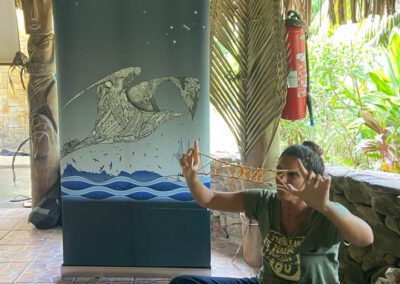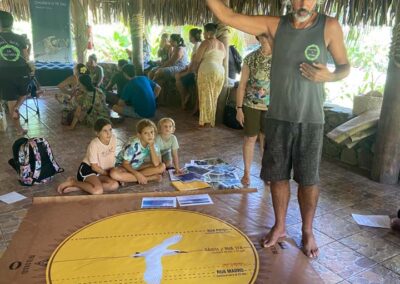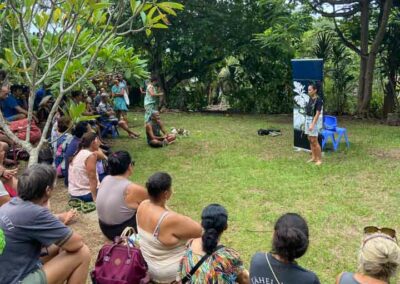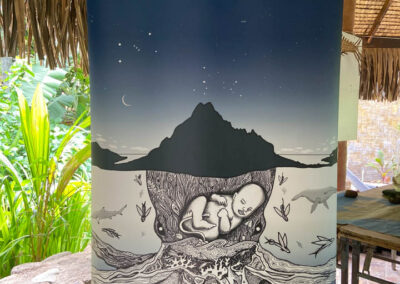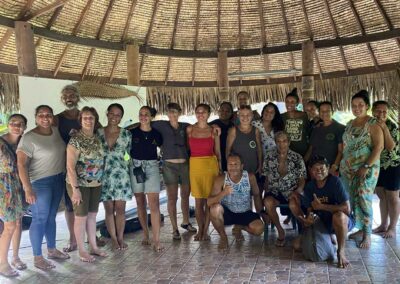‘Ohura’a o te tau project
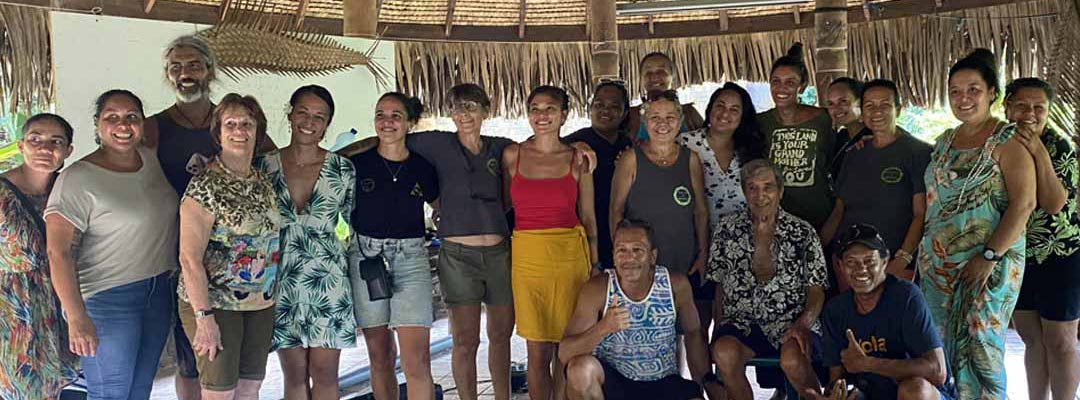
1 – TORO TE A’A: or the child’s place in his or her family lineage and in the history of his or her people, and more specifically Hawaiki nui.
2 – TERE O RĀ: or the observation of the course of the sun during the year with the identification of the four cardinal points, the two Solstices, Equinoxes, Matari’i-i-ni’a and Matari’i-i-raro. Under the guidance of their teacher, children will observe it at home, where they live, in context, and share their observations with their classmates.
3 – MATARI’I-I-NI’A: or Hotura’a, Tau ‘auhune.
The abundance of fruit in the family garden and in the neighbours’ gardens, the mangoes in the valley, dad’s peach, mum’s flowers, parents’ Fa’a’apu, the starry sky above the house – these are the signs that children will observe in their own homes, in their own context, and bring back to class throughout the Matari’i-i-ni’a period, from November to May.
4 – MATARI’I-I-RARO: or Tau o’e, period of restriction.
The child will observe at home, through the activities of his parents, his ‘opūfeti’i, fishing for ature, ina’a, the maraamu blowing, the Matau a Maui in the sky above his house at night, the days getting shorter, all the telltale signs of this very special period which runs from the end of May to November. The relevance and simplicity of his observations will enrich the information he shares with his classmates.
The whale in Matari’i-i-raro will remind them of the vital importance of our Ocean.
5 -TE HEI-HONO-RAU: or the link between Te Ra’i, Te Fenua ‘e Te Moana.
The child will be interested in and affirm the name of the zenithal star of his island, his mountain, his valley, his river and that of the pass of his mataeinaa. All these elements are sung in the himene tarava of his community. The art of the Fai will help him to consolidate this link.
6 – WRITTEN, AUDIO AND VISUAL DOCUMENTATION:
A variety of teaching resources (fact sheets, songs, videos) will be made available to teachers in three languages: Tahitian, French and English. A dedicated YouTube account, “Tahei ‘Auti ia Moorea”, will be set up to broadcast audiovisual content.

